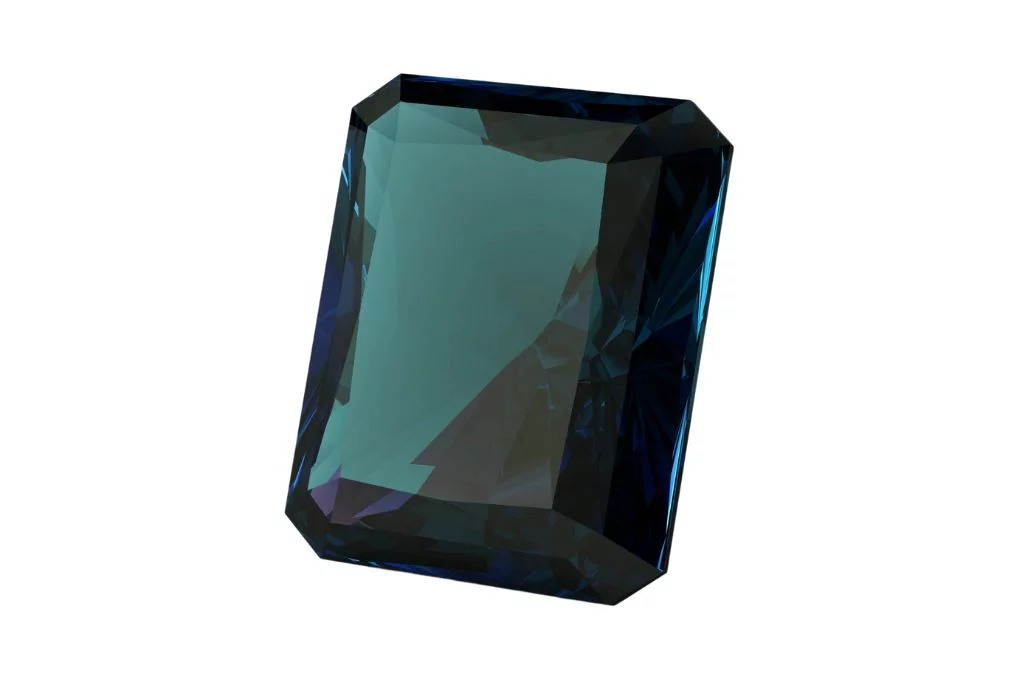Physical Appearance of Alexandrite
Alexandrite is a rare and highly prized gemstone known for its remarkable color-changing properties. This variety of chrysoberyl typically displays a striking green hue in daylight or fluorescent lighting, while transforming to a deep red or purplish-red under incandescent light. This unique characteristic, often described as “emerald by day, ruby by night,” is the most distinctive feature of alexandrite.
Crystal Structure
Alexandrite forms in the orthorhombic crystal system, typically occurring as tabular or prismatic crystals. It often forms twinned crystals, creating a distinctive star-shaped or hexagonal appearance. These twinned formations are sometimes referred to as “Russian twins” due to the gemstone’s discovery in Russia’s Ural Mountains.
Color and Pleochroism
Beyond its color-changing ability, alexandrite exhibits strong pleochroism, meaning it can display different colors when viewed from different angles. The three pleochroic colors are typically green, orange-yellow, and red-purple. This property adds depth and complexity to the gemstone’s appearance, especially in larger specimens.
Clarity and Luster
High-quality alexandrite is usually transparent to slightly included. It possesses a vitreous luster, giving it a glass-like shine when polished. The gemstone’s hardness (8.5 on the Mohs scale) allows it to take an excellent polish, enhancing its brilliance and overall appearance.
Unique Features
Some alexandrite specimens may display a cat’s eye effect, known as chatoyancy, when cut as cabochons. This phenomenon appears as a narrow band of light across the stone’s surface, resembling a cat’s eye. This feature, combined with the color change, makes cat’s eye alexandrite particularly rare and valuable.
Historical and Cultural Significance of Alexandrite
Alexandrite, a rare color-changing gemstone, holds significant historical and cultural importance. Discovered in Russia’s Ural Mountains in 1830, it was named after Tsar Alexander II. The stone’s ability to change color from green in daylight to red in incandescent light made it highly prized among Russian aristocracy. This unique property also led to its association with balance and adaptation in various cultures.
Metaphysical Associations
In metaphysical circles, Alexandrite is believed to possess powerful energetic properties. It is often referred to as a stone of prosperity and renewal, thought to bring good fortune to its wearer. Many crystal enthusiasts claim that Alexandrite can enhance intuition, creativity, and imagination. It is also associated with strengthening the connection between the physical and spiritual realms, making it a popular choice for meditation and spiritual practices.
Traditional and Modern Applications
Traditionally, Alexandrite has been used in fine jewelry, particularly in rings, pendants, and earrings. Its rarity and color-changing properties make it a sought-after gemstone for collectors and enthusiasts. In modern times, Alexandrite has found applications beyond ornamentation. It is used in laser technology due to its unique optical properties. In alternative medicine, Alexandrite is sometimes employed in crystal healing practices, where it is believed to aid in emotional balance and physical healing.
Believed Benefits
Proponents of crystal healing attribute numerous benefits to Alexandrite. It is said to promote self-esteem, enhance decision-making abilities, and foster a sense of purpose. Some believe it can help alleviate stress and anxiety, promoting overall emotional well-being. Physically, Alexandrite is thought to support the regeneration of nervous tissue and aid in the treatment of disorders related to the spleen and pancreas. While these claims lack scientific backing, many individuals find comfort and inspiration in working with this captivating gemstone.

